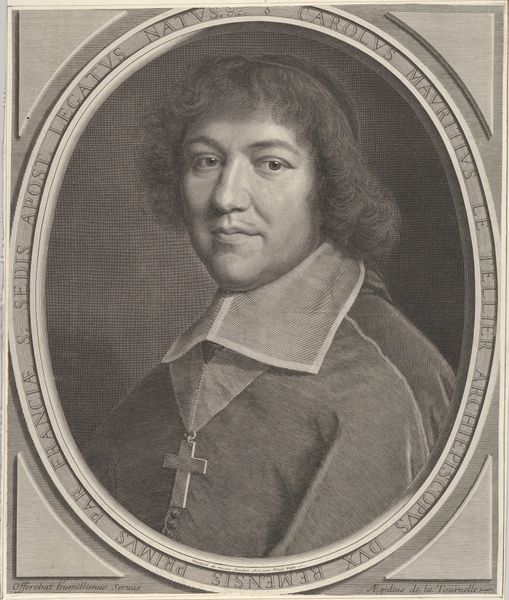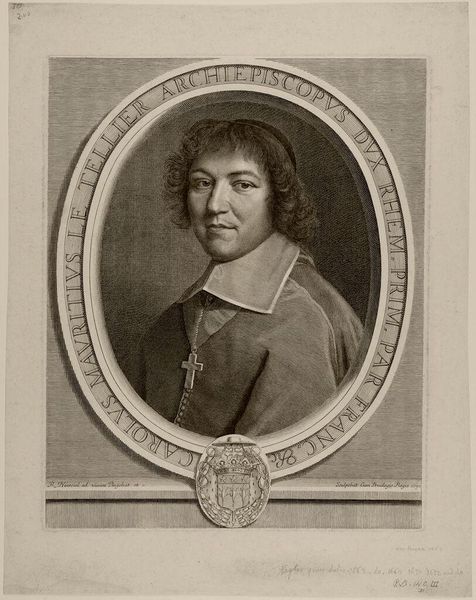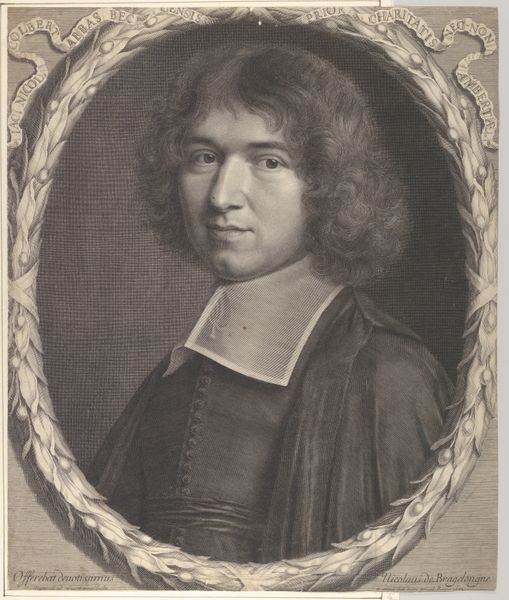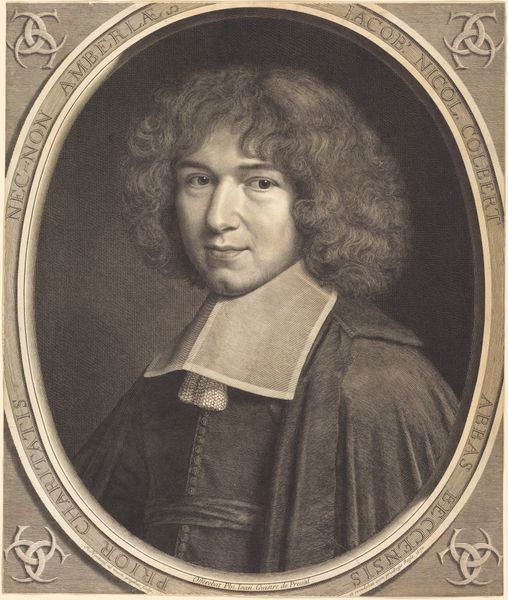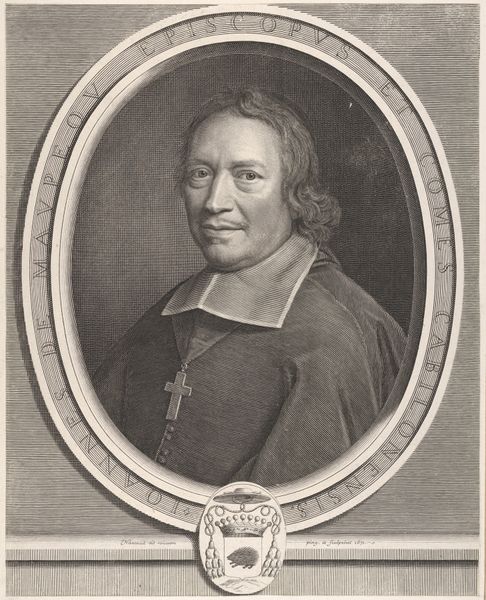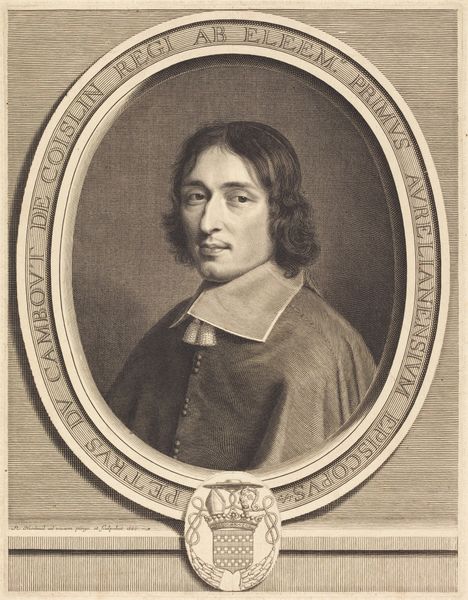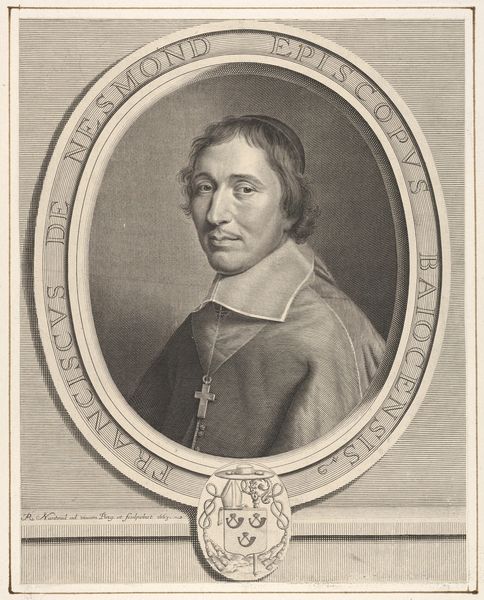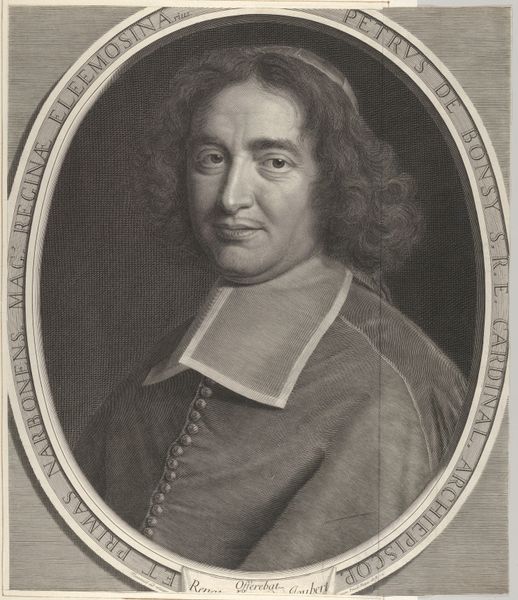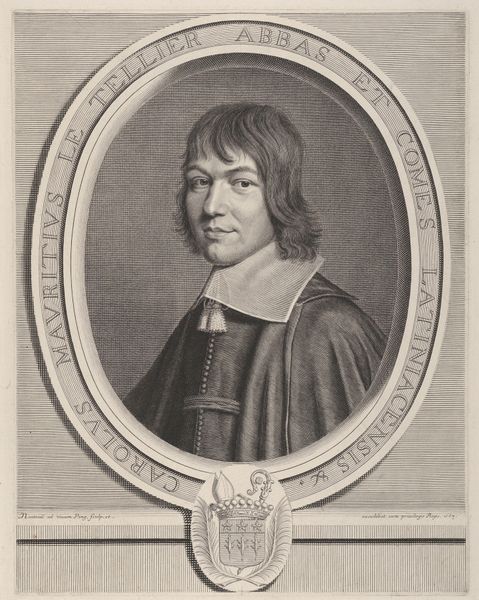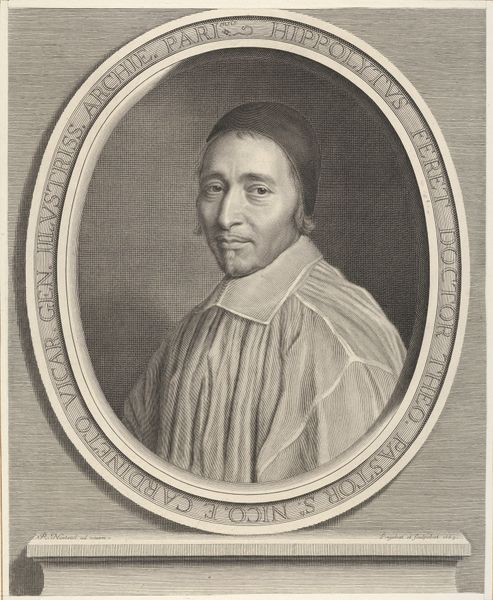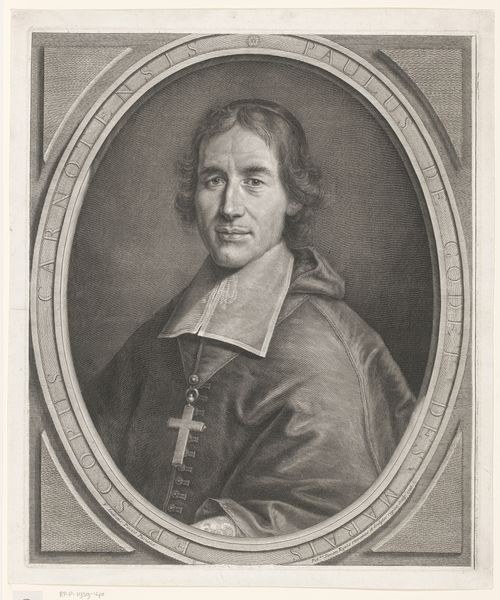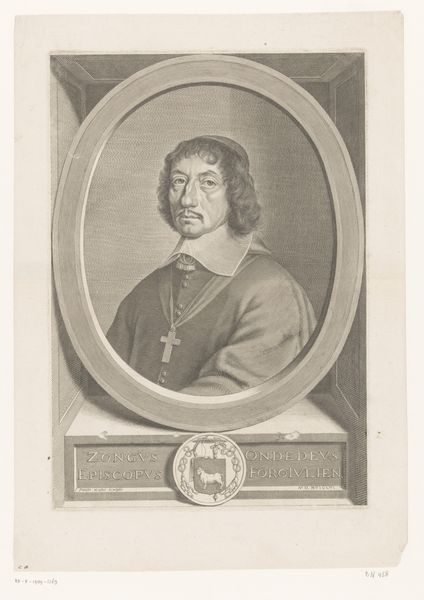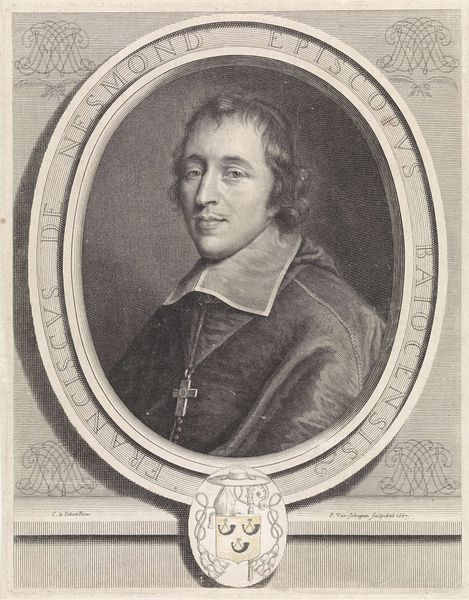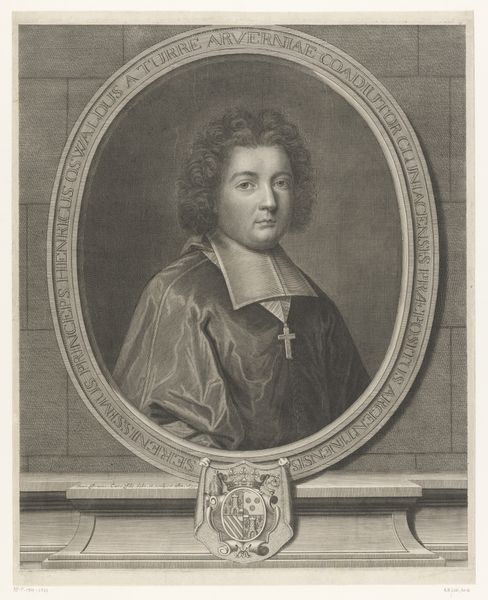
drawing, print, intaglio, engraving
#
portrait
#
drawing
#
baroque
# print
#
intaglio
#
engraving
Dimensions: Sheet: 15 7/16 × 12 1/8 in. (39.2 × 30.8 cm) Plate: 13 3/8 × 10 13/16 in. (34 × 27.5 cm)
Copyright: Public Domain
Curator: Here we have Robert Nanteuil’s "Charles-Maurice Le Tellier," an engraving dating back to 1670. It’s part of the Metropolitan Museum of Art's collection. Editor: The crispness of the lines is remarkable. It's striking how much texture Nanteuil achieved in Le Tellier’s face and hair, all rendered through careful, repetitive strokes. It gives an impressive depth to what is, after all, a flat, printed image. Curator: Absolutely. Nanteuil was famed for his portraits, particularly of figures in the French court and church. He captures not just a likeness, but a sense of Le Tellier’s status. Notice the oval frame, containing the Latin inscription detailing his ecclesiastical roles, practically branding him for the intended audience. Editor: I'm drawn to the material choices as well. Engraving, with its reliance on metal plates, allows for such fine detail. Consider the labour involved; each line meticulously etched, demanding immense skill and control. How much would something like this cost, labor-wise, back in the 17th century? Curator: Certainly a reflection of Le Tellier's wealth and standing, though prints made the imagery more widely accessible than a unique painting for instance. These images shaped public perception of prominent figures. In fact, he was an important figure in Louis XIV’s court and a patron of the arts himself. Editor: So this print becomes part of a circuit, then—material representation of power reinforcing that power's social presence. It’s a tool of soft power, using readily available, if painstakingly crafted, prints. Curator: Exactly. The very act of commissioning and distributing this portrait was a performance of influence. And it highlights how the printed image gained authority alongside traditional forms of art. Editor: It's easy to forget the sheer impact something like this would have had back then, a perfect reproduction that's easy enough to give as gifts, send off as a memento or promotional image... very interesting. Thanks for sharing your perspective! Curator: A pleasure. Thinking about the original context of art always deepens my understanding of its lasting impact.
Comments
No comments
Be the first to comment and join the conversation on the ultimate creative platform.
